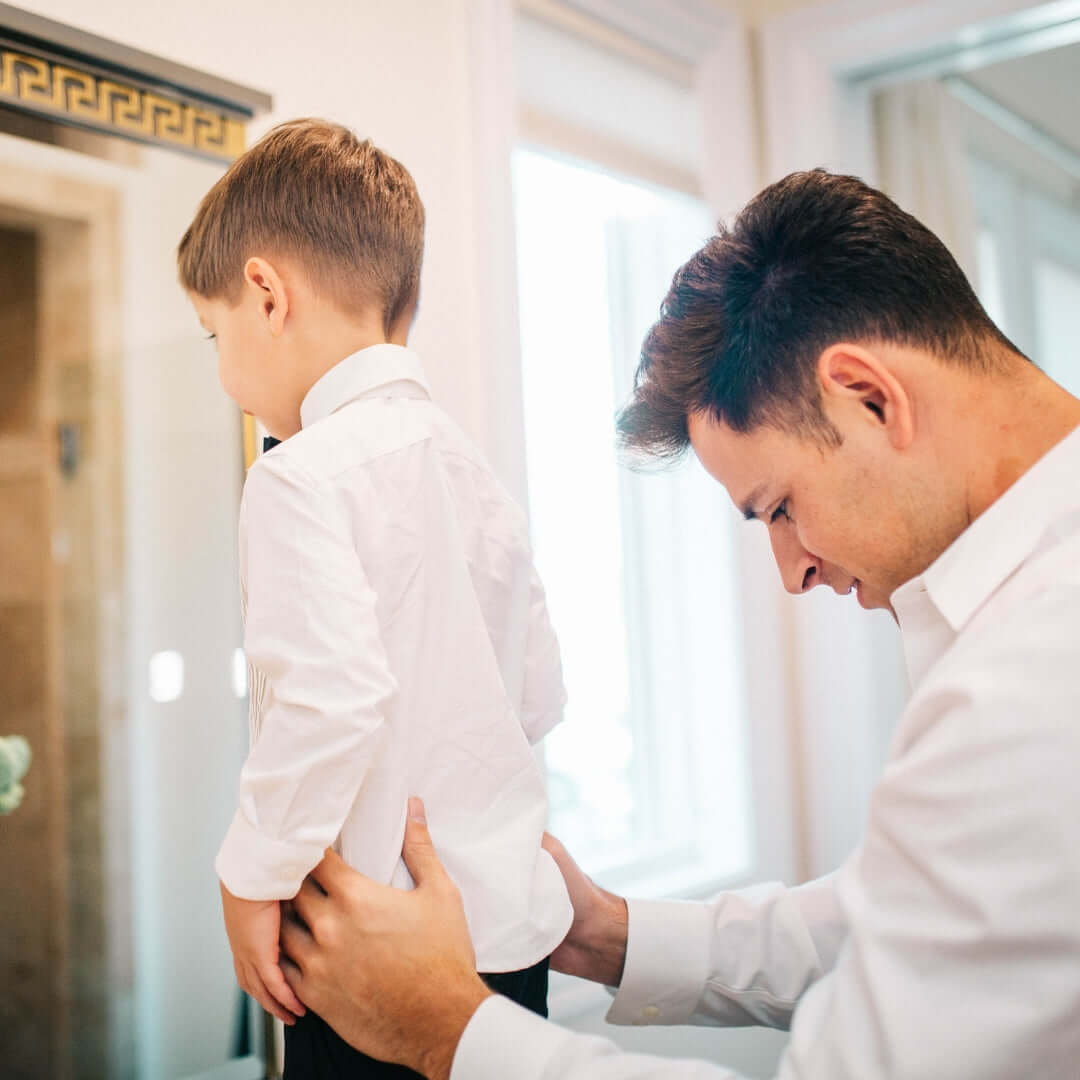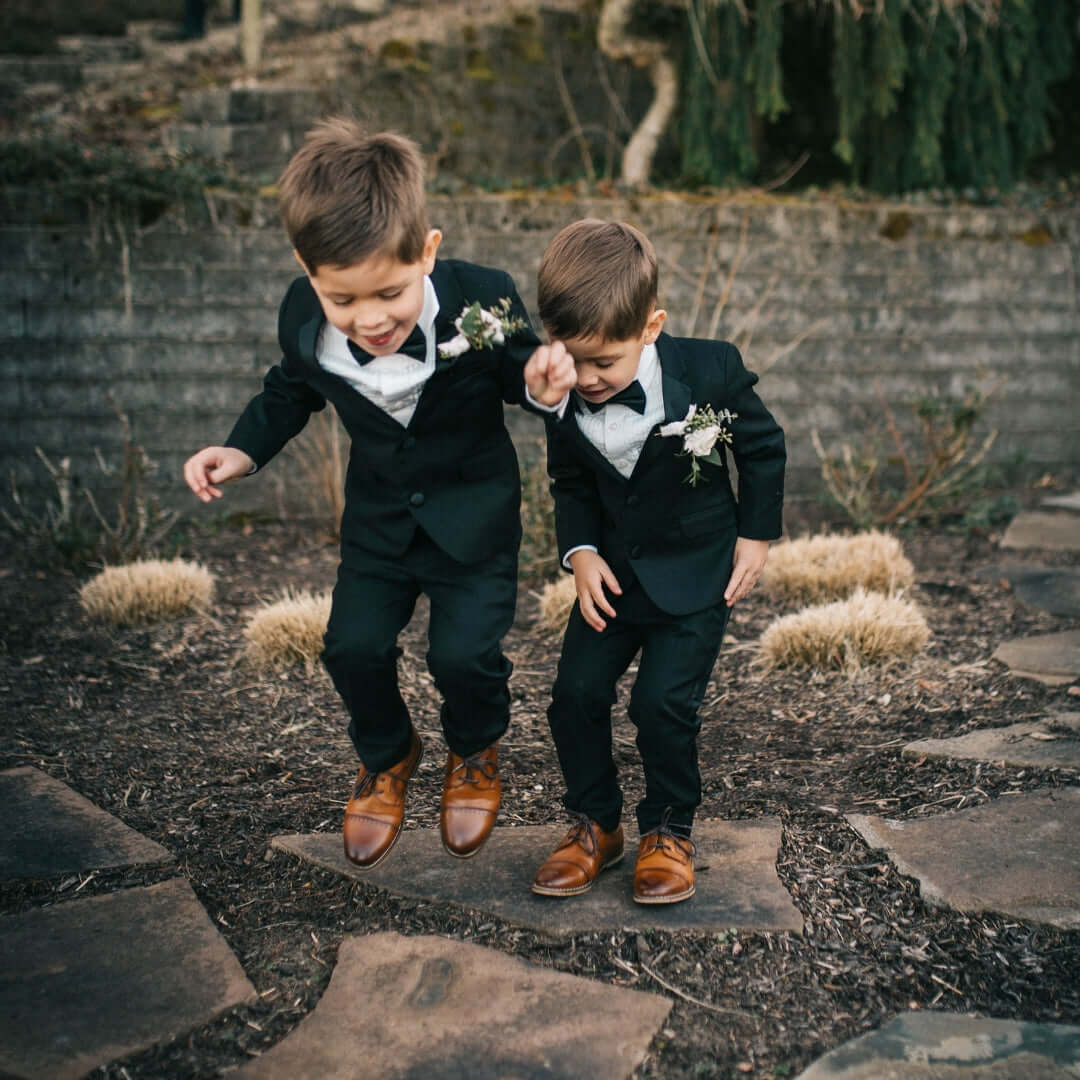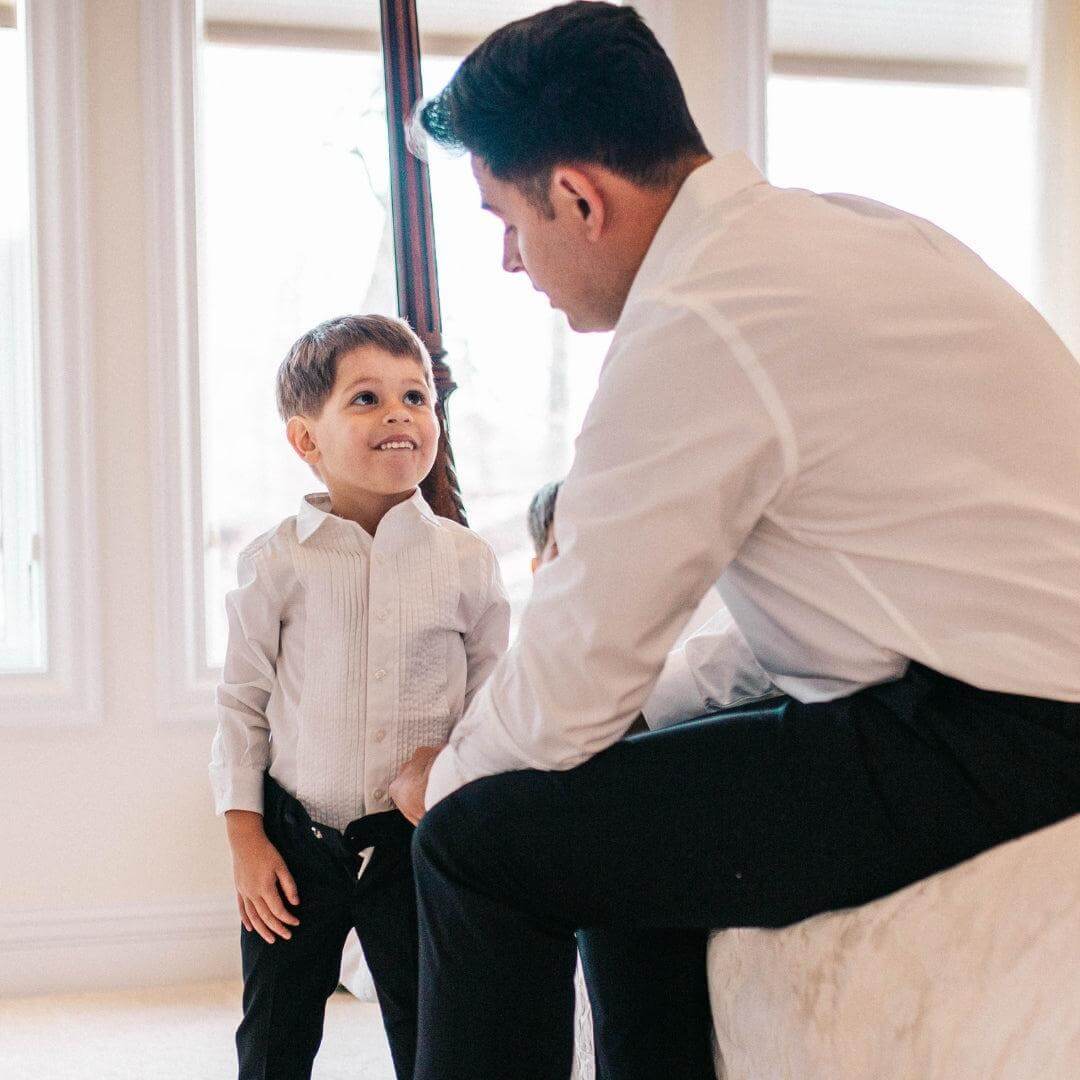Our Fitting Guide
Our fitting guide is carefully designed to ensure a proper and comfortable fit for your little ones. It provides detailed measurements for chest, waist, hips, height, and more. Using this chart as a reference, you can easily select the right size for your child, ensuring their clothing fits just right!

Suiting Size Chart
Find the perfect fit for your little gentleman with our boys suiting size chart, tailored to help you suit him up in style and comfort.

Accessories
Our kids accessories size chart ensures hats stay on, belts fit right, and every finishing touch is perfectly sized, because details matter (especially to kids with opinions).
How to Find the Perfect Fit
Sizing a suit for children involves several key measurements to ensure a comfortable and well-fitting outfit. Here is a step-by-step guide to help you correctly size a suit for a child.
1. Measure their Height
Begin by measuring the child's height. Make sure they are standing barefoot with their back against a wall. Use a tape measure to record their height in inches.
2. Measure their Waist
Measure the child's natural waistline, which is usually around the belly button area. Again, ensure the tape measure is snug but not constricting.
3. Measure their Hips
Measure the fullest part of the child's hips. This measurement is particularly important for boys' suits.
4. Measure the Inseam
For pants, measure the inside leg from the crotch down to where the child's pants should end (usually at the ankle). Ensure the child stands with their feet slightly apart.
5. Determine the Suit Size
Using the measurements you've taken, refer to the specific size chart below.
NOTE: Appaman Pants come with an adjustable waistband. Plus the Suit Pants come with 2 inches of extra seam allowance for the hem for a perfect fit.
Tip #1: Use the size chart
Do not assume that the size corresponding with your child's age will be the right one. Kids come in all shapes and sizes, so that's just a starting point. This is especially true for older kids, where there’s a much wider range of sizes at a given age.
When in doubt, or if you are in between two sizes, we almost always recommend ordering the larger one, unless you have specific fit preferences (if so, keep reading)
For detailed sizing information tailored to your child’s gender, please refer to our Girls’ Clothing Size Chart and Boys’ Clothing Size Chart.
Tip #2: Consider the kid's body type & the cut or versatility of a particular style
Appaman runs true to size, but it’s based on a narrow cut. Also, our sizes are based on a garment having a fitted look, like you see on our models. That means, if your child is on the slim or lean side, they will likely wear their usual size and it will fit comfortably. If your child is not the long and lean type, and you are choosing something that’s slim-fitted like a "skinny fit" trouser, you might want to size up to allow for a more generous fit. This is less important if you’re ordering a more forgiving style like slouchy sweats or an elastic waist skirt.
Keep in mind:
- Many of our woven pants and trousers have a hidden elastic band in the waist, so you can always cinch the waist smaller.
- For some jackets, you can push up the sleeves or wear it long, so it can be worn a little big.
- For some long, heavy coats, a little kid might get “swallowed” in an oversized jacket that is not very “scrunchable.”
Tip #3: Think about how THEY like the garment to fit.
Here’s where your personal preference comes into play, especially if you’re between sizes. Plus, there’s no rule that you have to buy the size we suggest!
Did you know??? Appaman suit pants come with a hem allowance to grow with your kiddo!
When you might decide to buy bigger size:
- Your kid prefers their t-shirts big and baggy
- You’re buying that flannel for an oversized, slouchy, ‘90s grunge look, and that’s not what the model photo shows.
- You want to leave plenty of room for your kid to grow into
- You expect to wear a lot of layers underneath
When you shouldn’t get a bigger size than the chart recommends:
- You really like the fitted look you see on our models and want it to look like the picture
- You are shopping for an upcoming event, and it’s important that the garment fits “just right” according to your kid’s current size – “room to grow” is not necessary



























